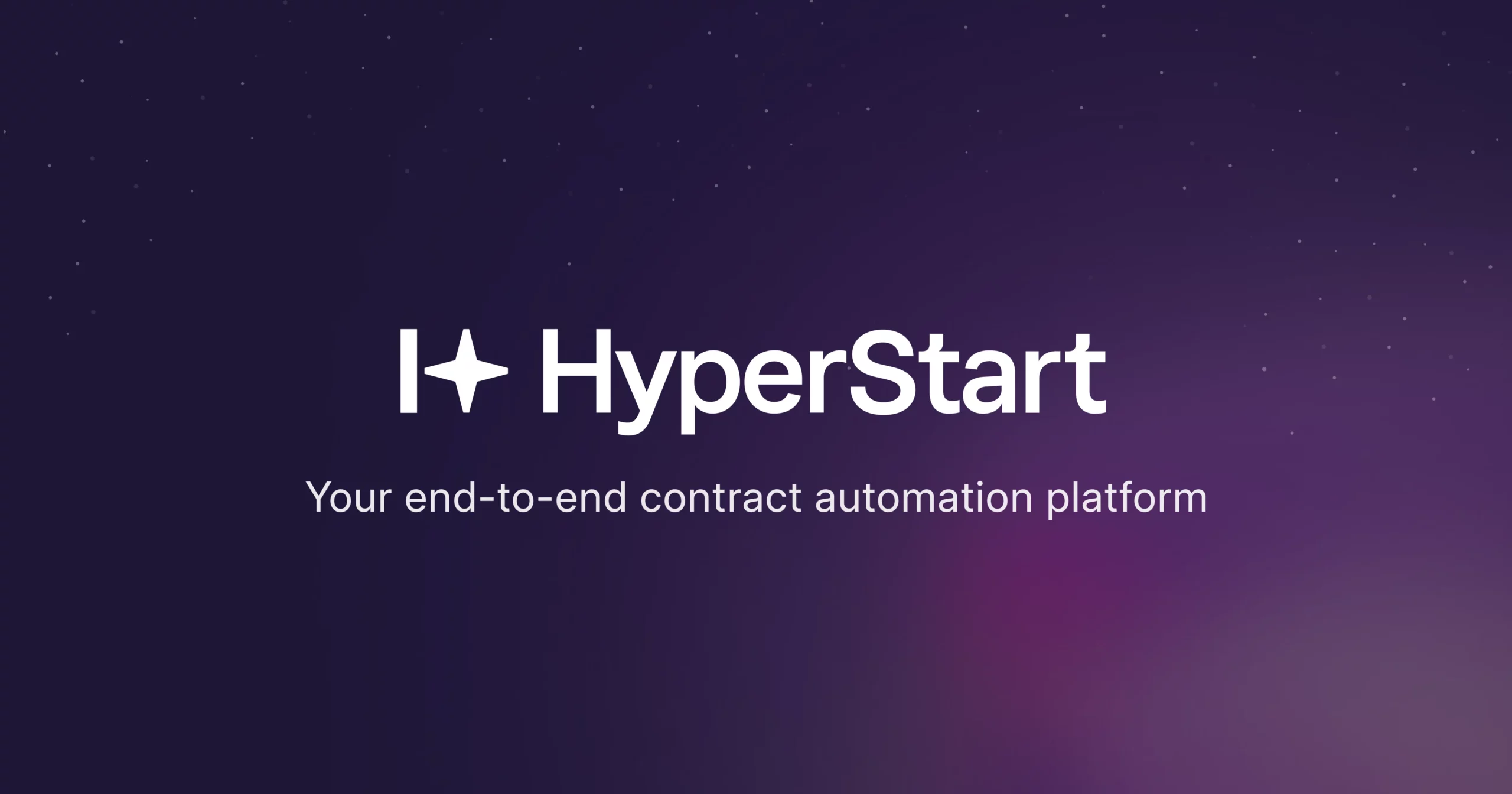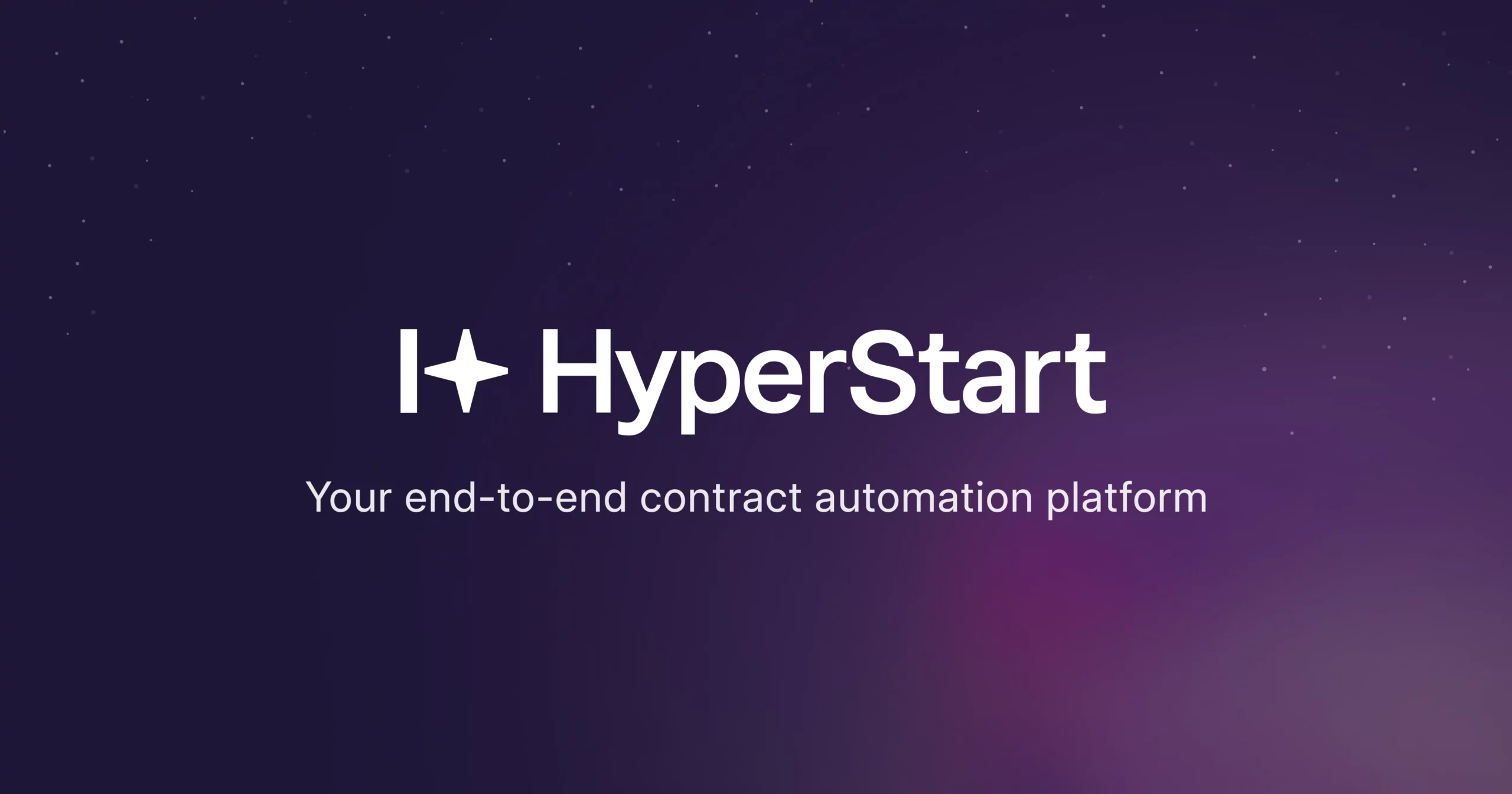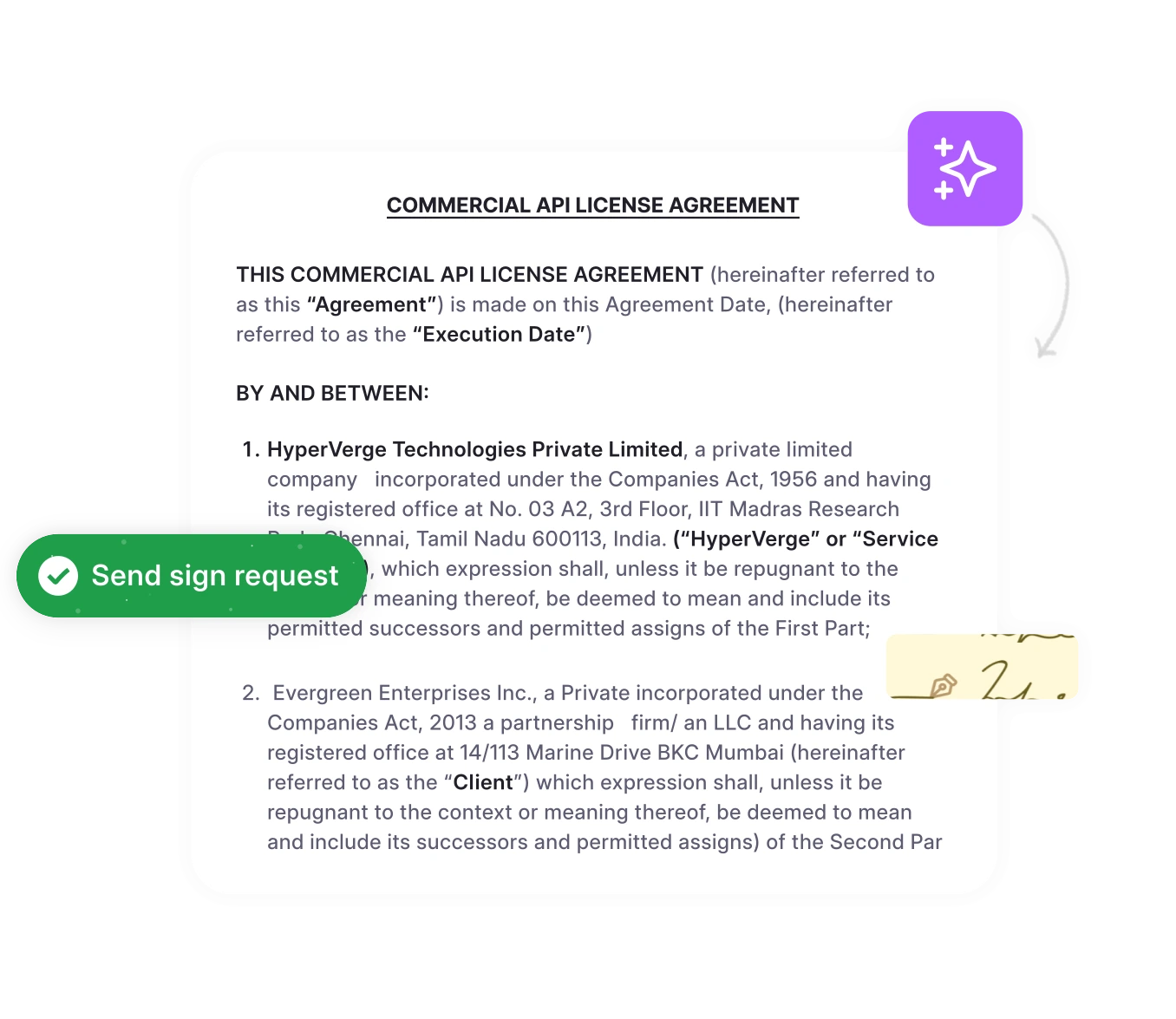For early-stage startups, landing your first investors, partners, or key clients often means moving fast while protecting your ideas. An exclusivity agreement ensures that a potential partner or investor won’t engage with competitors while you finalize contract negotiations or conduct due diligence.
Whether it’s securing a distribution deal, onboarding your first major client, or closing a seed investment, exclusivity deals provide startups with the breathing room to focus on growth without undue risk. This guide breaks down everything you need to know—from what these agreements cover to how to manage them efficiently.
What is an exclusivity agreement, and how does it work?
An exclusivity agreement is a legal contract that restricts one or both parties from engaging with competitors or third parties for a defined period. For startups, these agreements are crucial when negotiating deals with investors, partners, or early clients, allowing you to focus on finalizing arrangements without distraction.
How It Works:
1. Exclusivity Period:
- Defines the contract duration during which the parties are bound to the agreement.
- Example: A SaaS startup negotiating a partnership with a major app store might request a 60-day exclusivity period to finalize integration before exploring other platforms.
2. No-Shop and No-Talk Clauses:
- Prevents the startup or partner from pursuing or discussing alternative deals.
- Example: When seeking seed funding, a startup might include a no-talk clause to prevent potential investors from engaging with competitors during term sheet negotiations.
3. Termination Conditions:
- Specifies the conditions under which either party can terminate the agreement.
- Example: If milestones, such as product demo completion or investor due diligence, aren’t met, either party may terminate the agreement without penalty.
4. Remedies for Breach:
- Outlines the consequences of a contract breach if one party violates the exclusivity agreement.
- Example: Monetary damages or injunctions may be applicable if a partner secretly negotiates with a competitor during the exclusivity period.
5. Scope of Exclusivity:
- Can be limited to specific products, services, markets, or geographies.
- Example: A hardware startup may grant an exclusive distribution right for a product only in North America, while retaining the right to sell elsewhere.
Practical Startup Scenarios:
- Investor Negotiations: A seed-stage startup negotiating with a lead investor may secure a 30–60 day exclusivity period to finalize the terms of the term sheet.
- Partnership Deals: SaaS startups entering platform partnerships can utilize exclusivity to prevent a competitor from gaining early access.
- Early Customer Contracts: Startups signing their first enterprise client may include an exclusive sales agreement to protect sensitive product features during pilot programs.
In simple terms, an exclusive dealing contract prevents a distributor from selling the products of a different manufacturer, and a requirements contract obligates a buyer to purchase exclusively from a supplier.
Read
Understandig these fundamental components helps legal teams draft business contracts that protect client interests while maintaining enforceability. The key lies in striking a balance between the scope of restrictions and practical business needs.
Streamline your agreements
Automate contract tracking, stay compliant, and save time with HyperStart.
Book a DemoWhat are the 4 main types of exclusive contracts in business?
Legal teams encounter exclusivity contracts across virtually every industry and transaction type. Understanding these variations helps structure appropriate protections while avoiding common pitfalls.
| Agreement Type | Typical Duration | Primary Industry Use | Key Legal Considerations |
| M&A Exclusivity | 30-90 days | Technology, Healthcare | Due diligence protection, standstill provisions |
| Supply Chain | 6-24 months | Manufacturing, Retail | Antitrust compliance, supplier dependency |
| Distribution | 12-36 months | Consumer Goods, Software | Territory restrictions, performance metrics |
| Licensing | 1-10 years | Pharmaceuticals, Technology | IP protection, royalty structures |
1. Mergers and acquisitions exclusivity arrangements
M&A exclusivity agreements represent the most time-sensitive and legally complex category. These contracts typically include standstill provisions that prevent the target company from seeking alternative buyers, along with due diligence protections that allow for a comprehensive business review.
The exclusivity period in acquisition contexts typically spans 60 to 90 days, providing sufficient time for financial analysis, regulatory review, and negotiation of the definitive agreement. During this period, the target company is prohibited from soliciting competing offers or disclosing confidential information to other potential buyers.
2. Supply chain and distribution exclusive agreements
Supplier agreements create dedicated relationships between manufacturers and suppliers. An exclusive vendor agreement might require a supplier to dedicate specific production capacity or provide priority treatment during shortages. Conversely, exclusive purchase agreements obligate buyers to source particular products or services from designated suppliers only.
Distribution exclusivity takes several forms. Exclusive distributor arrangements grant territorial rights to specific partners, while exclusive dealer agreements might cover particular product lines or customer segments. These relationships often include performance requirements and contract renewal options.
3. Intellectual property and licensing exclusivity contracts
Technology and pharmaceutical companies frequently use exclusivity provisions in licensing arrangements. An exclusive license grants the licensee sole rights to use, manufacture, or distribute intellectual property within defined parameters. These agreements might cover specific geographic regions, market segments, or time periods.
Research and development partnerships commonly include exclusivity provisions protecting joint investments. A letter of exclusivity may precede formal licensing agreements, establishing preliminary exclusivity during the negotiation phase.
4. Employment and commercial real estate exclusivity provisions
Employment contracts often include exclusivity clauses that prevent workers from providing services to competitors. These provisions require careful contract drafting to ensure enforceability while avoiding unreasonable restrictions on worker mobility.
Commercial real estate leases may grant tenant exclusivity for specific business types within shopping centers or office complexes. Such provisions protect tenant investments while helping landlords maintain desired tenant mixes.
According to Federal Trade Commission guidance, the potential for antitrust violations increases with longer contract terms, broader market coverage, and fewer alternative sources. Legal teams must carefully analyze contract law requirements and service agreement precedents when structuring exclusivity provisions to ensure compliance with relevant laws and regulations.
What are the benefits and risks of different exclusivity clauses?
Legal professionals must weigh strategic advantages against potential compliance risks when advising clients on exclusivity agreements. Each type presents distinct benefit-risk profiles requiring careful analysis.
M&A exclusivity clauses: deal certainty benefits vs. termination risks
4 key benefits of M&A exclusivity include:
- Deal certainty – Eliminates competing offers during critical negotiation phases
- Due diligence protection – Provides uninterrupted access to confidential business information
- Resource focus – Allows concentrated attention on a single transaction without distraction
- Negotiation leverage – Creates psychological commitment from both parties
4 common risks in M&A exclusivity arrangements:
- Termination penalties – Early exit may trigger significant financial obligations
- Opportunity costs – Missed alternative transactions during the exclusivity period
- Market timing risks – Changing conditions may affect deal valuation
- Reputational concerns – Failed exclusive negotiations may signal business problems
Exclusive dealing arrangements can benefit competition in markets by ensuring supply sources or sales outlets, reducing contracting costs, or creating dealer loyalty. However, when the firm using exclusive contracts has market power, these arrangements can harm competition.
Read
Supply chain exclusivity: market advantages vs. antitrust compliance risks
4 strategic advantages of supply exclusivity:
- Market positioning – Secures preferred supplier relationships and priority treatment
- Quality control – Enables deeper integration and quality assurance processes
- Cost efficiency – Volume commitments often result in favorable pricing terms
- Innovation access – Exclusive suppliers may share proprietary technologies or methods
The 4 most common compliance risks in supply arrangements:
- Antitrust scrutiny – Extensive market coverage may trigger a regulatory investigation
- Supplier dependency – Over-reliance on single sources creates operational vulnerabilities
- Price manipulation – Exclusive arrangements might facilitate anti-competitive pricing
- Market foreclosure – Preventing competitor access to essential suppliers raises legal concerns
Legal teams must conduct thorough contract risk management analysis before recommending exclusivity provisions. The analysis should include market concentration studies, assessments of alternative sources, and evaluations of competitive impact.
Common enforceability challenges arise from contract ambiguity in scope definition, performance standards, or termination conditions.
Courts typically examine the reasonableness of restrictions in terms of duration, geographic scope, and business necessity.
Read
Financial exposure considerations include liquidated damages clauses, lost opportunity costs, and potential antitrust penalties. The most effective exclusivity agreements include clear metrics for performance evaluation and graduated remedies for different violation types.
Take control of your agreements
HyperStart automates contract tracking, streamlines compliance, and frees your team to focus on high-value tasks.
Book a DemoHow can legal teams effectively manage exclusivity agreement templates?
Legal professionals need systematic approaches for creating, monitoring, and maintaining exclusivity agreement portfolios. Effective management combines proper drafting with ongoing compliance oversight.
Drafting considerations and compliance monitoring for exclusivity portfolios
The 5 essential drafting elements for enforceable exclusivity provisions:
- Clear scope definition – Specify exactly what products, services, or activities are covered by exclusivity restrictions
- Performance metrics – Include measurable standards for compliance evaluation and breach determination
- Geographic boundaries – Define territorial limitations to avoid overreach and enforceability challenges
- Dispute resolution mechanisms – Establish procedures for handling conflicts before they escalate to litigation
- Amendment procedures – Create structured processes for modifying terms as business needs evolve
The 4 compliance monitoring requirements across contract portfolios:
- Tracking exclusivity periods – Maintain calendars for renewal dates, termination notices, and milestone reviews
- Performance evaluation – Regular assessment of whether parties meet exclusivity obligations
- Risk assessment protocols – Ongoing analysis of antitrust compliance and market condition changes
- Portfolio optimization – Periodic review of exclusivity strategy alignment with business objectives
Leveraging tools for efficiency
Manual methods—spreadsheets, email chains—create risks. Modern startups use contract management tools and AI-driven solutions to:
- Centralize all agreements in one place
- Automate tracking of deadlines and obligations
- Gain real-time insights for strategic decisions
Benefits of the exclusivity agreement template standardization
Using standardized exclusivity agreement templates helps startups save time, reduce errors, and maintain consistency across multiple deals. However, the exclusive agreement template should always be customized to fit the specific requirements of each agreement, industry-specific needs, and relevant regulatory obligations.
Key benefits include:
- Time savings:
Drafting every agreement from scratch can be slow and prone to mistakes. Templates provide a starting point with pre-defined clauses, allowing legal teams or founders to focus on tailoring key sections instead of rewriting the entire contract. - Improved consistency:
Standard templates ensure that important clauses—such as exclusivity periods, termination conditions, and dispute resolution mechanisms—are consistently included and phrased. This reduces the risk of enforceability issues or misunderstandings with partners. - Enhanced enforceability:
By using a tested template, startups can avoid common drafting pitfalls. Well-structured templates ensure that exclusivity obligations, scope, and remedies for breach are clearly defined, making it easier to enforce the agreement in the event of disputes.
Examples of template applications for startups:
Using a standardized exclusive rights contract template ensures all intellectual property and exclusivity clauses are consistently included.
- Investor exclusivity agreements: When negotiating term sheets or seed investment deals, standardized templates help quickly set the no-shop period, define investor rights, and establish exit clauses without repeated drafting.
- Early customer pilot contracts: For startups running beta programs or pilot projects, templates ensure key exclusivity and confidentiality clauses are included, protecting sensitive features while allowing iterative adjustments.
- Strategic partnership arrangements: Startups forming platform integrations or distribution deals can use templates to define territory, product scope, and performance metrics, while still tailoring the agreement to the specific partner and market.
By combining template standardization with careful customization, startups can expedite deal execution, ensure legal consistency, and safeguard their business interests as they scale.
Streamline your exclusivity agreement management with HyperStart
Exclusivity agreements are critical for startups when securing early investors, onboarding key clients, or forming strategic partnerships. They help protect your ideas, ensure focused negotiations, and prevent competitors from gaining an advantage.
Managing multiple agreements manually—using spreadsheets, emails, or filing systems—can easily lead to missed deadlines, compliance gaps, and deal delays. HyperStart solves this with AI-powered contract management, providing:
- 80% faster contract processing so that businesses can close deals quickly
- Automated tracking of exclusivity periods, milestones, and renewals
With the HyperStart-contract management platform, legal teams and startup founders can implement solutions rapidly, reduce administrative overhead, and focus on strategic negotiations and growth initiatives instead of repetitive contract tasks.
Don’t let contract chaos slow you down
Discover how HyperStart’s AI can instantly streamline your exclusivity agreements, keep you compliant, and save hours of manual work.
Book a Demo











